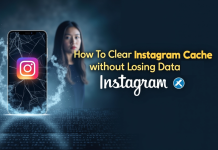Future signs point to a very different world of marketing; fast developing technology and shifting customer behavior will guarantee such difference. Strategies for the future of marketing are being formed by trends like AI in automation, VR experiences and deeper customer connections and personalization. By remaining competitive in any business across industries in anticipation of these shifts by 2025, businesses will be ready to adapt to them.
Table of contents
Hyper-Personalization Driven by AI
Hyper-personalization will become a basic element linked with the consumer’s experience as artificial intelligence keeps growing. Marketers will use artificial intelligence algorithms in 2025 and beyond to gather client data from many sources, including social media activity, browser history, and even purchase records, thereby creating tailored ads that directly address personal needs and wants. This goes beyond just calling clients by their first names.
It also entails providing the appropriate content, goods, and advice at just the right moment. Imagine an online streaming service, for example, which employs artificial intelligence to examine your watching patterns, search history, and even the times you often watch shows to suggest new series or movies just for you. This degree of personalizing not only helps customers find relevant material but also raises engagement levels.
Voice Search Optimization
More individuals are using voice search to get information online as speech recognition technology fast advances with devices like Siri and Alexa. This thus means a significant shift in the way online content is also produced and promoted. About half of all internet searches by 2025 are predicted to be voice-activated, hence marketers will have no option but to be ready for that shift.
Voice search optimization means using natural language question-based phrases similar to “Where can I find a pizza near me?” If one owns a business selling pizzas in town, implementing such key phrases in the content increases chances for discovery during voice searches. To optimize for voice search, sites must also ensure they load fast on mobile devices along with being user-friendly.
Sustainable and Ethical Marketing
Customers in the modern market are starting to notice environmental and human rights concerns more and more. Expectations point to even more demand from consumers seeking to connect with brands running ethically and sustainably by 2025 and beyond. This means being responsible in terms of environmental conservation during product development as well as raw material sourcing production processes down to product delivery.
For instance, when serving a product like organic clothing materials or predicted designs, one can adopt sustainable practices such as using recyclable packaging waste-free production processes as well as resource conservation efforts geared towards energy savings. Another thing you need to do is to ensure marketing messages are true and transparent when it comes to sustainability initiatives because greenwashing backfires! One builds an emotional connection with consumers across generations by respecting their desire for sustainability by adopting ethical practices along with communicating them clearly.
The Future of Marketing with Augmented Reality Experiences
Particularly among young people, augmented reality (AR) is becoming more and more popular as it may improve customer contact with items before judgments about purchases are made. AR applications provide users with additional digital information superimposed on the real world through mobile devices or AR glasses. By 2025, expectations are high that usage will increase significantly as a marketing tool.
For example, AR can enable a person to try out shoes virtually through an application before deciding whether or not to purchase them – this adds up to a 95% more likely probability that clients would make purchases compared with those who do not use AR facilities during shopping sessions. This equally enables customers to realize they are making smarter choices by using AR, or rather; it helps one build imagination into a campaign oriented towards a specific target audience.
Expanding Reach with Paid Followers for Instant Brand Visibility
Today, every brand aims to gain an initial boost in terms of popularity, and it has become a powerful strategy to buy followers in order to quickly increase audience size and also amplify brand visibility. As a result, if a brand has a huge number of followers, naturally, it attracts a lot more attention and engagement from potential organic followers. This “social proof” is what users will perceive as the brand becoming credible and popular, increasing the likelihood of them following and engaging.
Additionally, having a large following can improve discoverability on the platforms as profiles with a bunch of followers often tend to get more discovered themselves, and hence, content can reach a wider audience and indeed resonate quite better. This boost helps accelerate initial success and gives the engagement momentum required to reach a wider broader audience that’s interested in your brand, which positions the brand as a go to option in its industry.
Conclusion
While preparing for the future of marketing readjustments anticipated through 2025, it is apparent that technology, along with altered client expectations, generates opportunities plus challenges alike. The tone points will mark possible game changers such as hyper-personalization utilizing AI, incorporation of voice search optimization, plus a center on ethical as well as sustainable practices. AR similarly provides further interactive “appeal” division when contemplating consumer decision-making processes. Early adopters of these trends will be able to build stronger ties with their customers in an uncertain world now or later!











